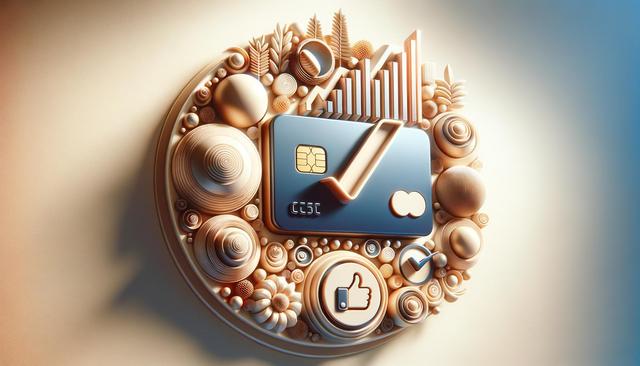Understanding How Credit Cards Work
Credit cards function as short-term loans that allow users to make purchases and pay for them later, either in full or over time with interest. When you use a credit card, the issuing bank pays the merchant on your behalf. You are then responsible for repaying the amount to the card issuer. If you pay the full balance by the due date, you avoid interest charges. However, carrying a balance can result in interest accrual based on the card’s annual percentage rate (APR). Knowing how billing cycles, grace periods, and interest calculations work is essential for managing credit responsibly.
Most credit cards come with a set credit limit, which is the maximum amount you can charge. Exceeding this limit can result in over-limit fees or declined transactions. Additionally, your usage patterns and repayment history are reported to credit bureaus, influencing your credit score. Responsible use, such as timely payments and low credit utilization, can help you build or improve your credit profile. Conversely, missed payments or high balances can negatively impact your score. Understanding these dynamics is key to making informed decisions about credit card use.
Types of Credit Card Offers Available
There are several types of credit card offers available, each designed to meet different consumer needs. These offers can vary based on features such as rewards programs, interest rates, fees, and additional perks. Choosing the right type of card depends on your spending habits and financial goals.
Common types of credit card offers include:
- Introductory 0% APR cards: These offer no interest on purchases or balance transfers for a limited time.
- Cash back cards: These provide a percentage of your spending back in the form of cash rewards.
- Travel rewards cards: Earn points or miles that can be redeemed for travel expenses like flights and hotels.
- Secured cards: Require a deposit and are often used to build or rebuild credit history.
- Student cards: Designed for college students with limited credit histories and often come with educational resources.
Each type of card may come with its own set of terms and conditions, so it’s important to read the fine print and understand the fees, interest rates, and usage restrictions before applying.
Evaluating Credit Card Terms and Conditions
When comparing credit card offers, reviewing the terms and conditions is critical. These documents outline the specific rules that govern your card usage, including interest rates, fees, and rewards structures. Look for the following elements when evaluating card agreements:
- Annual Percentage Rate (APR): This includes both purchase and penalty rates. Some cards have variable APRs that can change with economic conditions.
- Annual fees: Some cards charge a yearly fee, while others are free to maintain.
- Late payment penalties: Missing a payment can result in additional charges and potentially a higher APR.
- Balance transfer fees: These apply when moving debt from one card to another.
- Foreign transaction fees: If you travel often, consider whether the card charges extra for international purchases.
Understanding these costs helps you avoid surprises and make a more informed decision. Also, be aware of how the card issuer handles changes to the terms. Some may increase rates or fees with prior notice, so staying informed is necessary for long-term credit management.
Benefits and Drawbacks of Credit Card Use
Credit cards can offer several advantages for consumers, but they also come with potential downsides. On the positive side, credit cards provide a secure and flexible method of payment. Many cards offer fraud protection and are widely accepted both online and in-store. Additionally, earning rewards such as cash back or travel points can add extra value to everyday purchases.
However, there are also risks associated with credit cards:
- High interest rates: Carrying a balance can lead to significant interest charges over time.
- Debt accumulation: It’s easy to overspend when using credit, especially if you’re not tracking your expenses.
- Impact on credit score: Late payments and high credit utilization can harm your credit rating.
- Fees: From late fees to foreign transaction charges, the costs can add up if you’re not careful.
By weighing the benefits against the drawbacks, you can determine whether a credit card is appropriate for your financial situation. Responsible use is key to maximizing the advantages and minimizing the risks.
Tips for Choosing a Credit Card Offer
Selecting a credit card should be based on your financial habits, goals, and credit history. Start by assessing your needs—are you looking to earn rewards, consolidate debt, or build credit? From there, compare offers from different issuers, paying close attention to features that align with your priorities.
Here are some tips to guide your selection:
- Check your credit score beforehand to understand what types of cards you may qualify for.
- Use comparison tools to evaluate multiple offers side by side.
- Read customer reviews for insight into user experiences, such as customer service and ease of use.
- Look for introductory offers, but also consider the long-term value of the card.
- Make sure the rewards program matches your typical spending categories.
Don’t rush into applying for a card without due diligence. Every application results in a hard inquiry on your credit report, which can slightly impact your score. Choosing the right card the first time helps you get the most out of your credit experience without unnecessary setbacks.
Conclusion: Making Informed Credit Decisions
Credit cards can be valuable tools when used responsibly, offering flexibility, rewards, and a way to build credit history. However, understanding how they work, comparing offers carefully, and staying mindful of your own financial behavior are essential for maximizing their benefits. Whether you’re new to credit or looking to switch cards, taking the time to research and evaluate options will help ensure you choose a product that supports your long-term financial goals. Smart credit card use begins with informed decision-making and continues with consistent, responsible management.




Leave a Reply